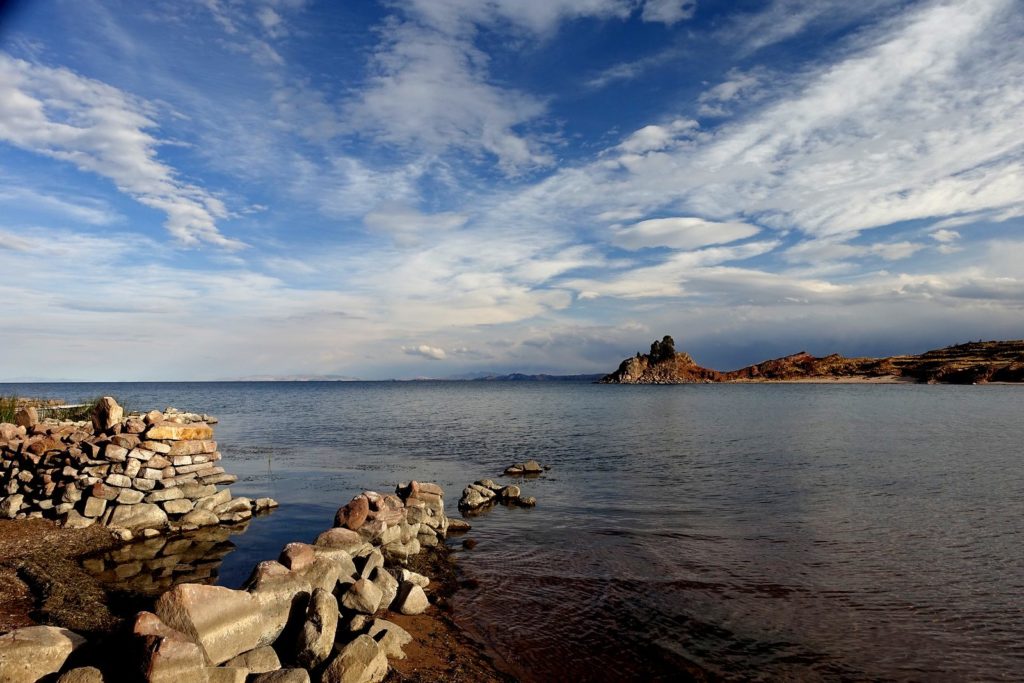
Lake Titicaca, Bolivia and Peru, is the highest navigable lake in the world. This lake is found at more than 3800 meters above sea level, which creates a beautiful and intriguing atmosphere. Besides, Lake Titicaca is 173 km long and 50 km wide, making it the largest lake in South America. The dark blue water, the clearness of the air at this altitude and the expansion of the sky create an spectacular scenery. A breathtaking, powerful and intense palette of colors.
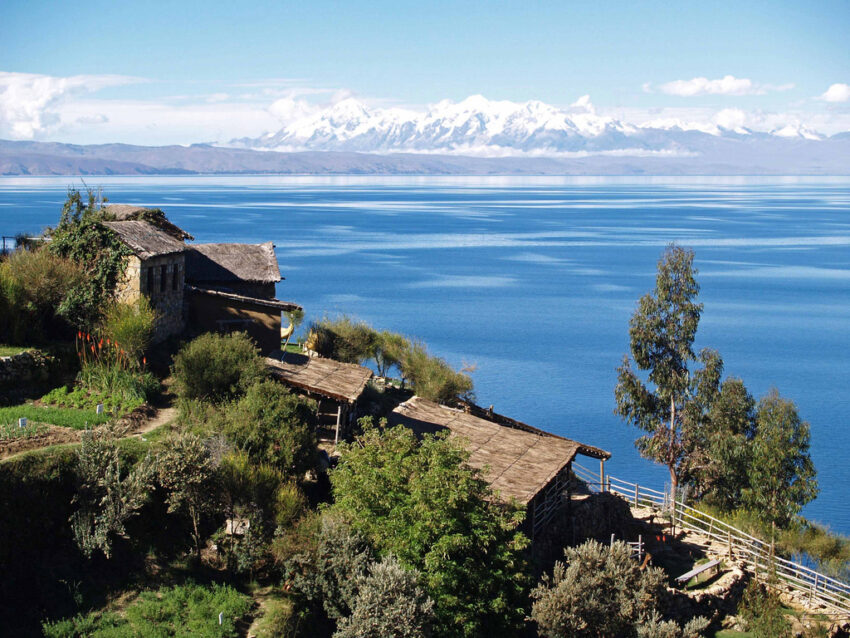
Lake Titicaca is situated to the west in Peru (Puno Region) and to the east in Bolivia (La Paz Department). The lake is divided into two parts. To the northeast, it’s Lake Huiñaymarca in Bolivia, the smallest portion of water. On the other hand, to the northwest, lies Lake Pequeño in Peru, which is the largest.
You can choose to stay on the shore of Lake Titicaca or go and explore the nearby islands in the lake. Either way, you will definitely get different but equally amazing experiences.
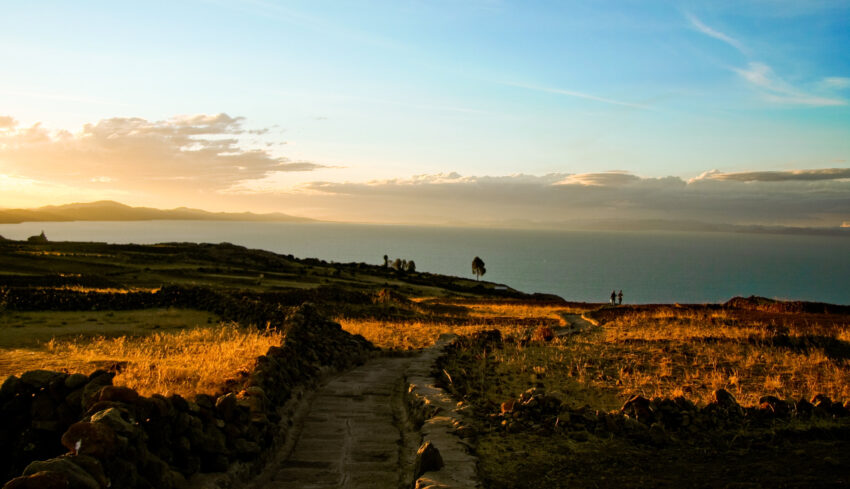
Activity/Place Highlights
Lake Titicaca: The Birthplace of the Sun
Many local people believe that there are spirits living deep under Lake Titicaca. In fact, its spiritual significance for locals makes the lake even more beautiful. According to the Incan Mythology, the creator god Viracocha came from Lake Titicaca and created the sun, the stars, and civilization. No wonder why Lake Titicaca is considered a sacred place for Incans.
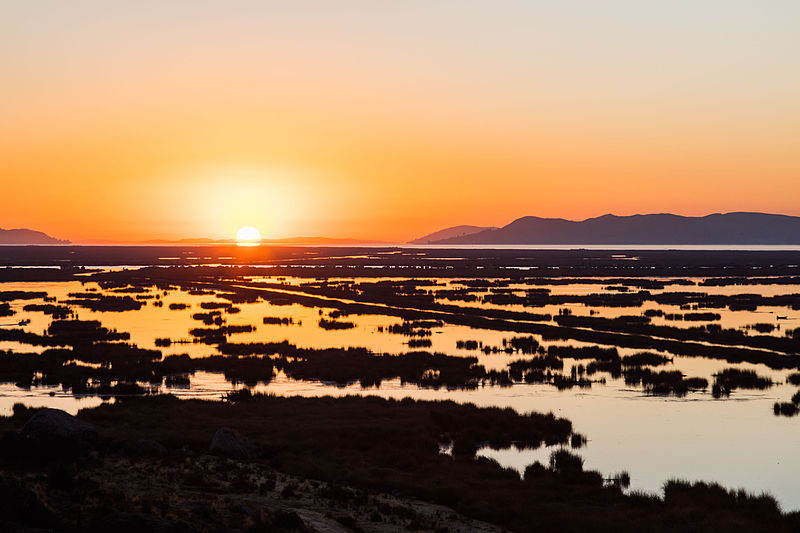
Floating Islands of Uros
To experience the lake and the people living near it to the fullest, head to one of the islands nearby. From there, the view is a totally different and even the culture varies from those who live in the mainland. For this reason and many others, tourists visit the floating islands of Uros as soon as they arrive at Lake Titicaca. Above all, what makes these floating islands special is how they are made of dried totora reeds.
The reeds are in constant maintenance; as the lowest reeds rot, new ones are placed at the top. This ancient method of building coupled with the intriguing and unique way of living at the islands, are surely what make the Uros a must-visit place.
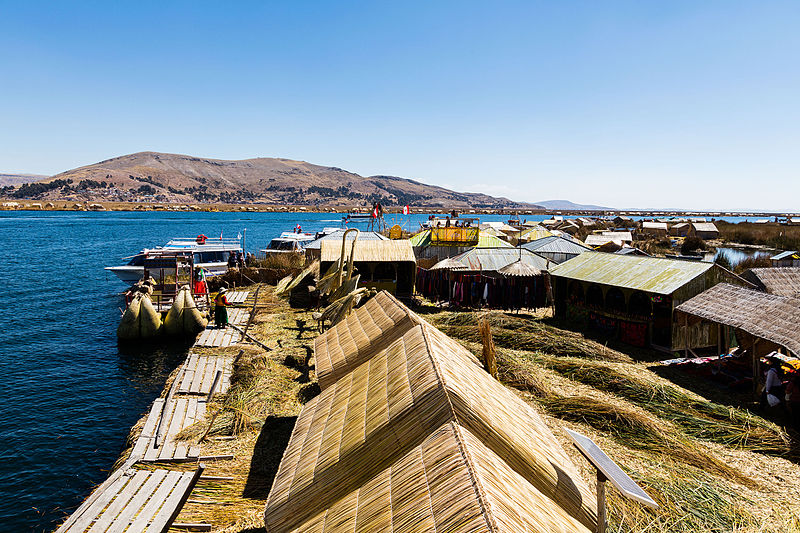
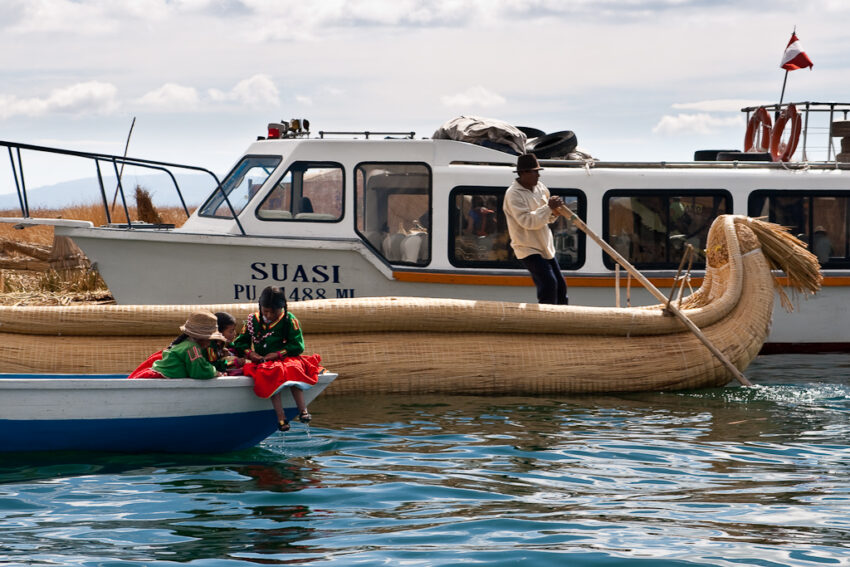
The Islands of Amantani and Taquile
After a three-hour boat ride from the town of Puno in Peru, you find two islands that have been less touched by tourists: Amantani and Taquile. Here, people speak in Quechua, the oldest living language of Peru. The technological advances of the 21st century have not been able to disrupt the traditions of the people living in those islands. In fact, Taquile people still wear their traditional skirts and shawls. Besides, men tend to add to their clothing embroidered waistbands and woolen caps to adorn themselves. It’s certainly hard to find people so loyal to their culture and history nowadays.
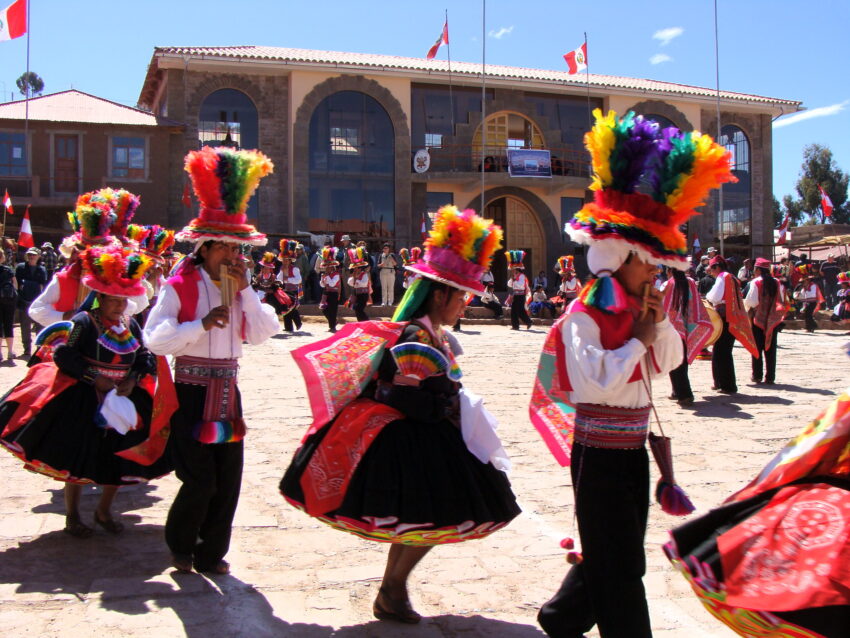
Amantani, the larger island, has a population of 800 ranging from fishermen, farmers, and weavers. Here and there you can spot many stone walls, used to separate the terraces of each family.
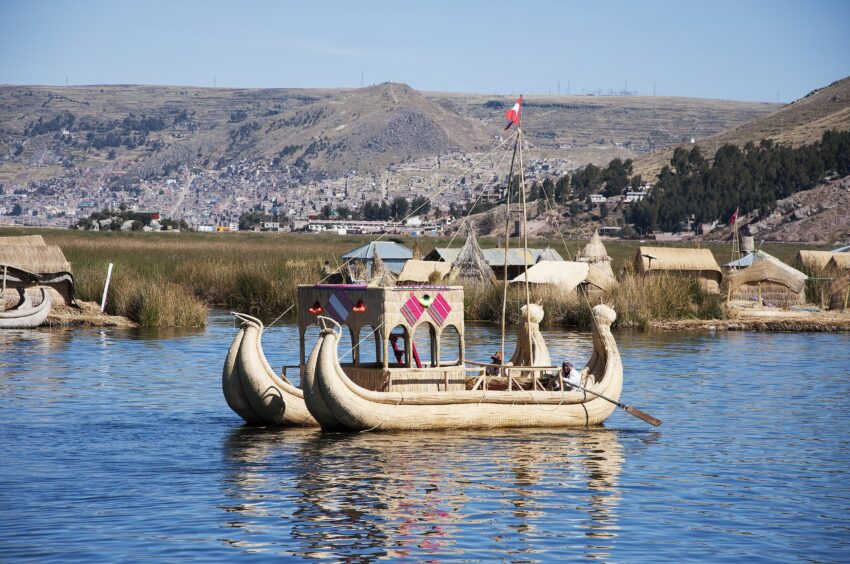
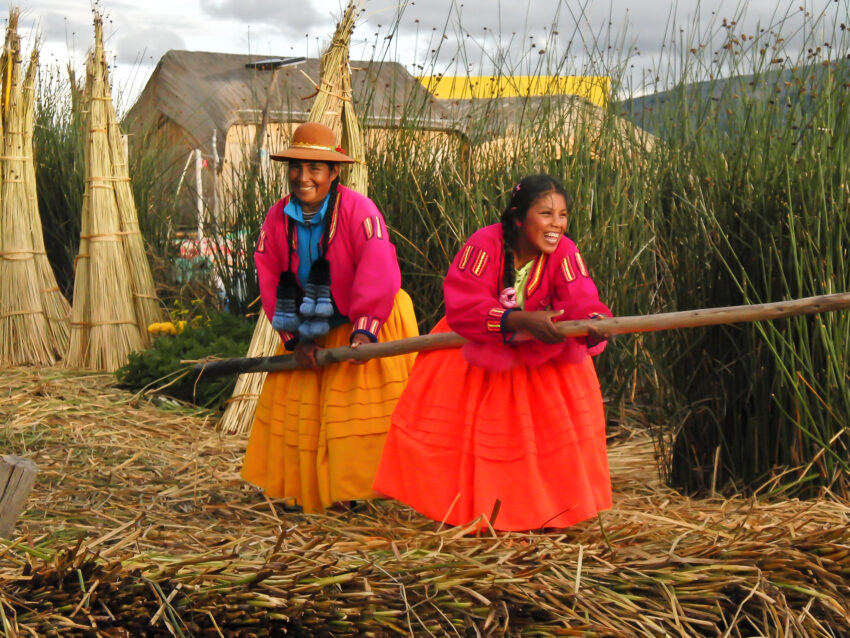
Pachamama and Pachatata
On the island of Amananati, you can climb two peaks, with ruins of pre-Incan constructions on top. On the first peak, you find the ruins of the temple of Pachamama, the representation of mother Earth. Then, on the other peak, the ruins of the Temple of Pachatata, the representation of father Earth. Every January, the Festival of Sacred Land takes place. This festival divides the people in two groups: one group climbs to the first peak, and the other, to the second.
Because of the altitude, the climbing up to Pachamama is really demanding. However, the view to the mountains of the Cordillera Real on the Bolivian side of the Lake is worth the hike. Besides, this peak is the perfect spot to appreciate the sunset. At that moment, both the lake and sky reach a spectacular intensity of colors.
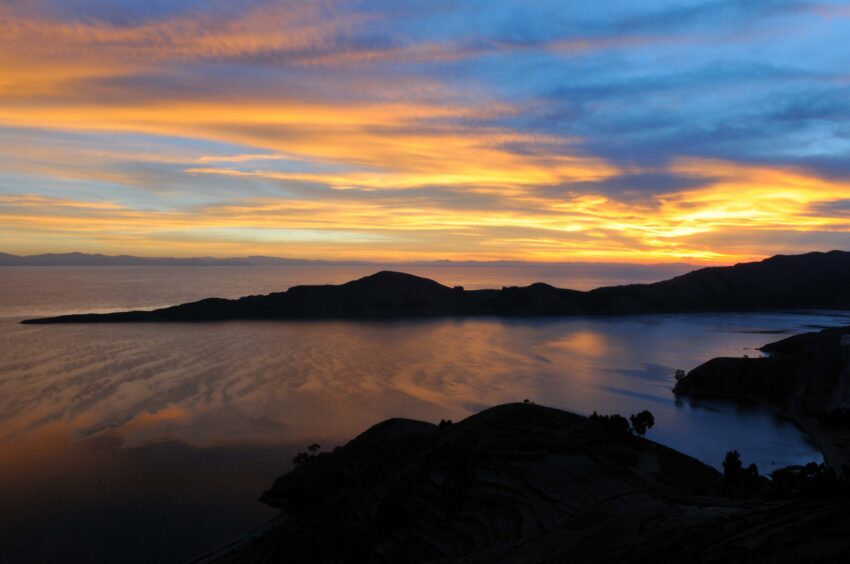
How to get there
There are two possibilities to get to the lake from the Peruvian side and from the Bolivian side. In Peru, you can take a train from Cuzco to the town of Puno. This train takes a day and undertakes striking high-altitude zones.
From Bolivia, you can reach the town of Copacabana from La Paz. Keep in mind that the most stunning views of the Bolivian Cordillera are seen from the islands near Copacabana. In addition, you can take a 12-hour ferry ride that crosses the lake between the two South American countries. The best options for accommodation are on the Peruvian side, specifically in the town of Puno.
If you loved this article or found it useful, don’t forget to share it with your adventurous and travel-hacking friends! If you want more posts like this, follow us on Youtube, Instagram, Pinterest, Twitter or Facebook and subscribe to our newsletter!

